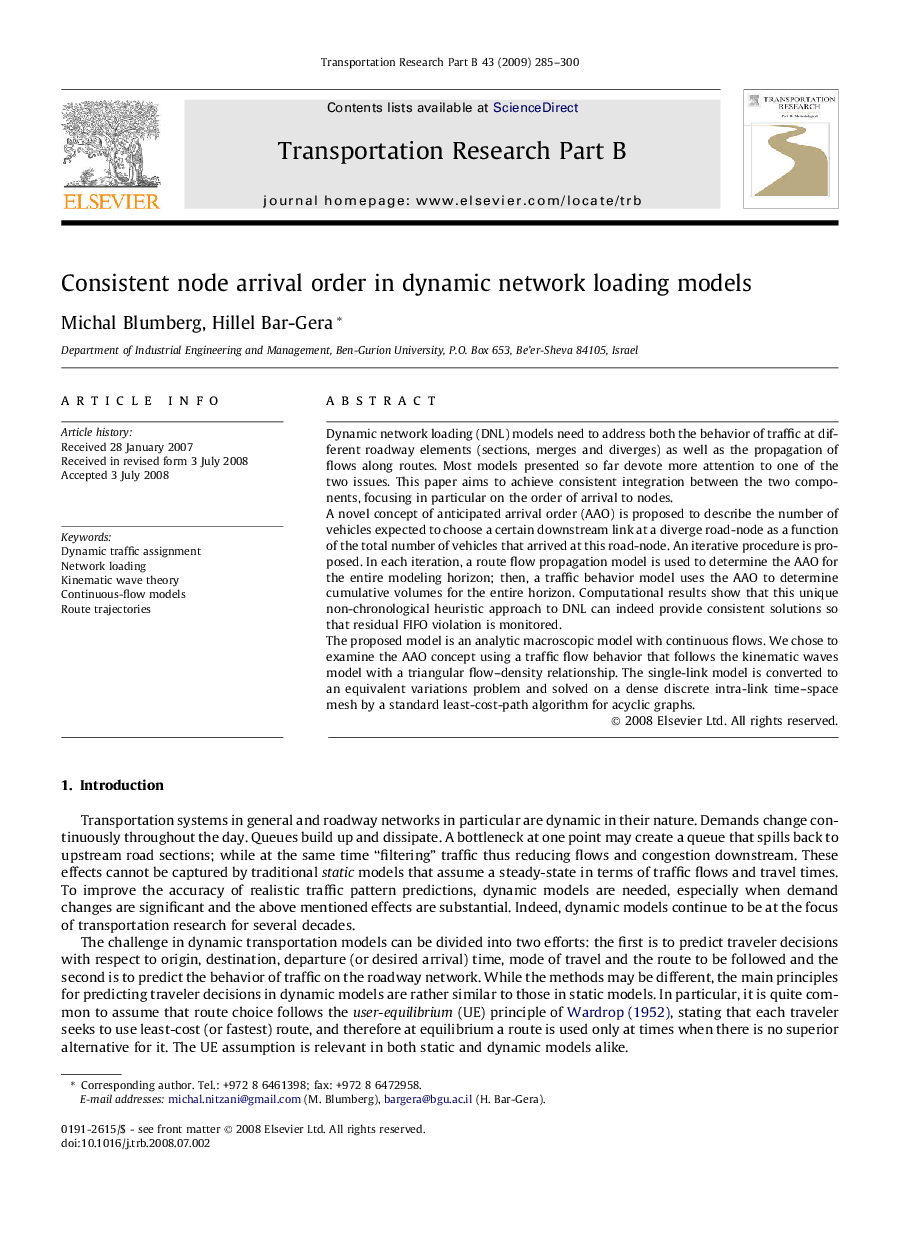| Article ID | Journal | Published Year | Pages | File Type |
|---|---|---|---|---|
| 1132909 | Transportation Research Part B: Methodological | 2009 | 16 Pages |
Dynamic network loading (DNL) models need to address both the behavior of traffic at different roadway elements (sections, merges and diverges) as well as the propagation of flows along routes. Most models presented so far devote more attention to one of the two issues. This paper aims to achieve consistent integration between the two components, focusing in particular on the order of arrival to nodes.A novel concept of anticipated arrival order (AAO) is proposed to describe the number of vehicles expected to choose a certain downstream link at a diverge road-node as a function of the total number of vehicles that arrived at this road-node. An iterative procedure is proposed. In each iteration, a route flow propagation model is used to determine the AAO for the entire modeling horizon; then, a traffic behavior model uses the AAO to determine cumulative volumes for the entire horizon. Computational results show that this unique non-chronological heuristic approach to DNL can indeed provide consistent solutions so that residual FIFO violation is monitored.The proposed model is an analytic macroscopic model with continuous flows. We chose to examine the AAO concept using a traffic flow behavior that follows the kinematic waves model with a triangular flow–density relationship. The single-link model is converted to an equivalent variations problem and solved on a dense discrete intra-link time–space mesh by a standard least-cost-path algorithm for acyclic graphs.
